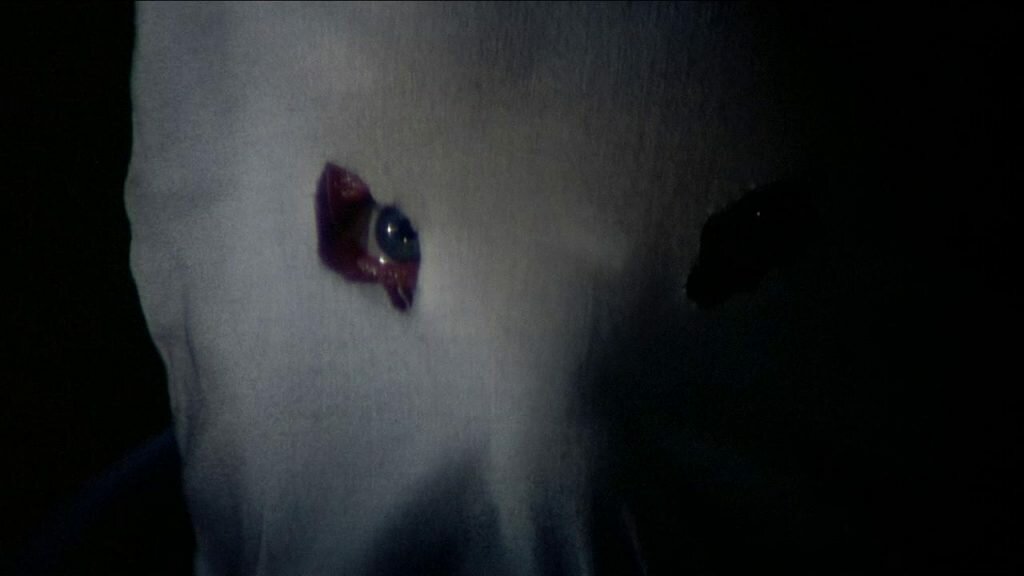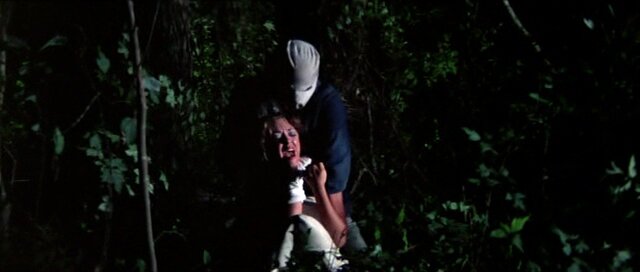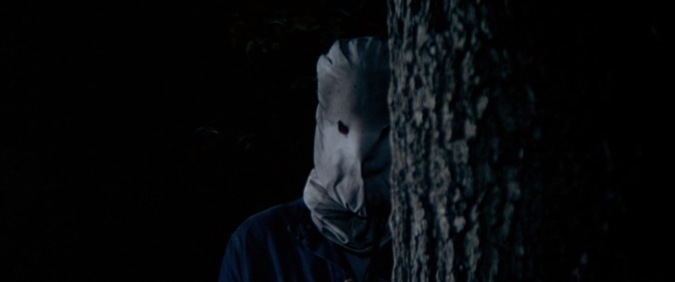Slasher Through the Ages: The Town that Dreaded Sundown
The slasher genre is filled with classics, hidden gems and duds. They’re both simple to make, but often difficult to get right. But even then, some lesser quality ones are doing something right for someone out there. As I’ve slowly fallen in love with the sub-genre, I realize I haven’t seen nearly enough of both the hidden gems and the misfires. Throughout this column, I’ll watch films I loved and ones I haven’t seen, and discuss their importance in the genre regardless of quality, how they may have inspired or been referenced in future films, while also crossing off films on my watchlist. Our first film to discuss, 1976’s The Town That Dreaded Sundown.

The Town That Dreaded Sundown always feels like a film that more people need to talk about, but is often forgotten. Part of the appeal is how the film can walk the tightrope of being both wild and very tame in retrospect. What we see compared to other horror films is almost lacklustre, but the film tells the true story of the Texarkana Phantom Killer. The film opens by saying the only false things in the film are the victims’ names. There is something deeply unsettling watching reenactments of a serial killer murdering folk. This is true for David Fincher’s Zodiac reenactments, who feels like the Phantom Killer might have inspired him himself.
While there is a lot in The Town that Dreaded Sundown that works, it’s the tone that never truly does. There are moments of attempted comedy to try and elevate the material. While the audience hears the narration of a deadly murder, the film forces them to stop and watch as it happens. The one that always comes to mind is when the woman is tied up to a tree, and the killer uses a knife attached to a trombone to stab the victim. Her own instrument is used to kill her. It is torture, and cruel, and we are forced to watch it unfold.
There’s something sickening about watching horror films and what it says of the audience that loves to devour them. While we all have reasons to watch and love them, there’s part of the extremism that is hard to fight, see how cruel someone can be, and call it entertainment. Horror films in the 70s were all about the extremes. Whether it’s The Texas Chain Saw Massacre, The Exorcist, The Last House on the Left, Black Christmas, The Hills Have Eyes – they were all too extreme for the general audience at the time. That’s why this film stands out amongst them. A joke or two can be found in some of these films, more often than not before anything happens, but there is no time for jokes after Leatherface appears on screen for the first time. And yet, near the end of this film, we are given a comedic chase scene. Even while the town has boarded up their windows and is terrified, we get a laugh break. Or an attempt at one.

While we’ve already had a few monumental entries in the sub-genre, we’re still two years away before we are given Halloween, a film that uses pieces of other slasher films and pieces it together for us. The Town that Dreaded Sundown ends with them acknowledging the killer has gotten away and is never caught. The director and crew make the film and host a premiere screening in the same town. They watch the film in a theatre with a huge crowd, where we believe the killer attended, which is plausible, as most killers are often selfish in that capacity. That’s what the surge of true crime films and television series (CSI, Criminal Minds) has taught us to believe. By ending the film by acknowledging the documentary and the screening, we have introduced the self-awareness trait into the genre. The same thing that made films like Scream stand out.
Somewhere along the way, the town is fascinated by the thing that terrified them, the same way horror films fascinate us. In 2014, Alejandro Gomez-Rejon would make a meta-sequel also named The Town that Dreaded Sundown (that is incredible, but that’s a different conversation), and it opens with a drive-in screening of the ‘76 film. Somewhere in between those 38 years, the world has changed. Between the town’s own obsession with the deaths and the content they watch as entertainment. The same way one might watch any of those same horror films from the 70s and refer to them as tame compared to the gore we’re accustomed to in modern-day horror, these teenagers are also desensitized to the murders of those who walked in the same town as they do.

Watching the ‘14 film, you can feel some of the grindhouse-era style, but it’s still digital, bright, crisp and gory. There are no attacks hidden in a cut, we can see everything. What is shown in horror films and what audiences expect has changed a few dozen times and continues to do so. There’s this cannibalization with the sub-genre, especially as we reach the late 90s and the Kevin Williamson-era of hot adults playing hot teenagers while being meta. They adopt, adapt, and try to give something we haven’t seen before, while using a backlog of films to make it happen. The same way Halloween did. The same way so many others would eventually do so.
The Town that Dreaded Sundown is a film I often recommend, but more so when one has the opportunity to watch the ‘14 film as well. It tells a complete story about legacy in a town that made the friendly town close their doors to strangers. It also bridges the gap in how slasher films have advanced and stayed the same over the past 40+ years.
If you’d like to read more of Andres’ work, you can find it here!